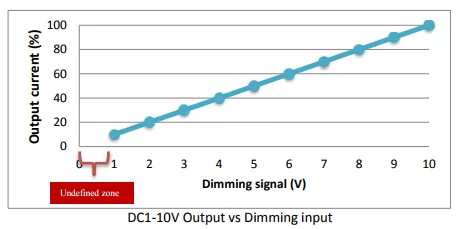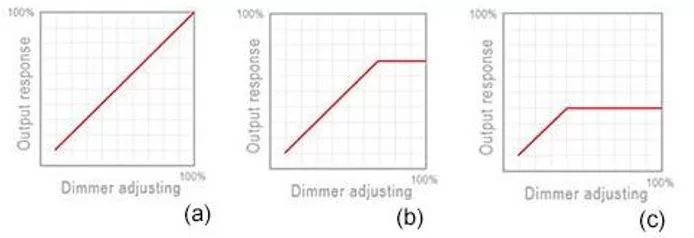To expand your news reach, consider advertising with our media partner, Patch Media, at https://heypapipromotionsmedia.town.news/. Patch is a nationwide news network comprising over 1,000 hyperlocal websites dedicated to community news across the United States. For press release distribution services, please call or visit https://heypapipromotions.com/advertise.
Suncom LED drivers provide dimming capabilities to meet the requirements of modern lighting control. Offering a wide range of LED drivers with advanced dimming features, Suncom has developed a comprehensive line tailored for LED lighting. Many models feature Suncom's innovative 3-in-1 dimming capability. With '3-in-1 dimming,' users can dim LEDs using three distinct signal forms: Passive Resistance, 1-10VDC (0-10V), and Pulse Width Modulation (PWM). This dimming functionality enhances flexibility, simplifying end-application design.
Potentiometer: Simple Resistance Dimming with Some Shortcomings
A straightforward and cost-effective solution for dimming LED drivers involves using a basic 100k Ohm potentiometer. This variable resistor can be easily connected to the dimming wires, offering a budget-friendly option.
However, there are two main drawbacks associated with this dimming method that should be considered in end-application design. Firstly, the dimming response tends to be unstable, particularly when multiple drivers are connected to a single potentiometer. Secondly, there are limited options for integrating the potentiometer seamlessly into the aesthetic design of the application or household.
These limitations may prompt users to explore alternatives such as electronic potentiometers or 0-10V dimmers. While 100k Potentiometers are suitable for smaller projects requiring simple knob control or for testing LED light dimming range and output, they may not be ideal for larger installations or applications requiring smoother dimming performance and aesthetic integration.
However, there are two main drawbacks associated with this dimming method that should be considered in end-application design. Firstly, the dimming response tends to be unstable, particularly when multiple drivers are connected to a single potentiometer. Secondly, there are limited options for integrating the potentiometer seamlessly into the aesthetic design of the application or household.
These limitations may prompt users to explore alternatives such as electronic potentiometers or 0-10V dimmers. While 100k Potentiometers are suitable for smaller projects requiring simple knob control or for testing LED light dimming range and output, they may not be ideal for larger installations or applications requiring smoother dimming performance and aesthetic integration.
1-10V or 0-10V Dimming
0-10V dimming involves adjusting the control signal of the dimming wires from 1-10VDC to regulate LED brightness. In 0-10V or 1-10V dimmable drivers, a 10V signal flows from the Dim (+) line to the Dim (-) line. When the wires are left untouched (without a dimmer), the signal remains at 10V, resulting in 100% light output. Similarly, with a dimmer connected and turned up fully, the signal remains at 10V, maintaining maximum light output. As the dimming signal is reduced, light output decreases until reaching the minimum output level.
However, there is a distinction between 0-10V and 1-10V dimming drivers. With 1-10V dimming, the dimming signal can go down to 1V or 10% light output, meaning there is still some visible light and power flowing through the system at its lowest setting. Therefore, a switch at the AC main lines is required to cut off power when the light is not needed. On the other hand, 0-10V dimmers can go down to .57V or 5.7% light output before cutting off power.
For Suncom drivers, the output status is not guaranteed when the signal is less than 1V. Using a switch setup as described above can assist the circuit and ensure it is turned off when not in use. The typical dimming response for a 1-10V dimming signal is illustrated below:
However, there is a distinction between 0-10V and 1-10V dimming drivers. With 1-10V dimming, the dimming signal can go down to 1V or 10% light output, meaning there is still some visible light and power flowing through the system at its lowest setting. Therefore, a switch at the AC main lines is required to cut off power when the light is not needed. On the other hand, 0-10V dimmers can go down to .57V or 5.7% light output before cutting off power.
For Suncom drivers, the output status is not guaranteed when the signal is less than 1V. Using a switch setup as described above can assist the circuit and ensure it is turned off when not in use. The typical dimming response for a 1-10V dimming signal is illustrated below:

It's important to note that Sunom drivers require a current sinking dimmer, rather than one that already provides the 0-10V signal. We offer an excellent current sinking 0-10V dimmer specifically designed to work seamlessly with Sunom drivers. This simple yet effective design only requires wiring to the dimming wires and smoothly dims LED lights. Additionally, the dimmer includes a faceplate for wall mount installations and is available in rotary knob or slider options. To install, connect the gray wire on the dimmer to Dim (+) and the purple wire to Dim (-).
If you have a controller with a 0-10V output signal, consider using the ELN, which is compatible with that type of circuit.
If you have a controller with a 0-10V output signal, consider using the ELN, which is compatible with that type of circuit.
PWM Dimming Controls
Another dimming option involves using a PWM (Pulse Width Modulation) signal generated by a dimming switch or control. It's important to understand that this method does not give the driver a PWM output similar to the PWM power supply from Suncom. Instead, it regulates the light output through the dimming wires.
In this type of dimming, the control will have wires or terminals that connect to the driver's dimming wires. As the duty cycle is reduced, the LED controller decreases the output of the LED driver. For example, you could use an Arduino to output a PWM signal to the dimming wires.
In this type of dimming, the control will have wires or terminals that connect to the driver's dimming wires. As the duty cycle is reduced, the LED controller decreases the output of the LED driver. For example, you could use an Arduino to output a PWM signal to the dimming wires.
Why Are the LEDS Dimming at an Uneven or Rapid Rate?
The typical response to this issue is that the LED driver being tested is underloaded. Most dimmable Suncom drivers function by reducing the amplitude of the current supplied to the LED lights.
For smooth dimming that synchronizes with the motion of the dimming switch, the LED driver should be loaded as close to its rated maximum power output as possible. I'd suggest aiming for around 90-95% load capacity. If the load is less than this, dimming performance may degrade, and there may be some dead space.
The graphs below provide a visual representation of how dimming will behave with LED drivers operating at various load capacities:
For smooth dimming that synchronizes with the motion of the dimming switch, the LED driver should be loaded as close to its rated maximum power output as possible. I'd suggest aiming for around 90-95% load capacity. If the load is less than this, dimming performance may degrade, and there may be some dead space.
The graphs below provide a visual representation of how dimming will behave with LED drivers operating at various load capacities:

(a) LED driver loaded to 100% - Provides smooth and uniform dimming.
(b) LED driver loaded to 70% - No dimming occurs until the dimmer switch is lowered below 70%.
(c) LED driver loaded to 30% - No dimming occurs until the dimmer switch is lowered below 30%.
If your LED driver is appropriately loaded as recommended above and dimming issues persist, there may be a problem with the dimming switch.
In conclusion, Suncom LED drivers offer an array of dimming solutions tailored to meet the diverse needs of modern lighting control. From 0-10V dimming systems to PWM dimming controls, users have access to versatile and reliable dimming options to enhance their LED lighting experience.
Comments